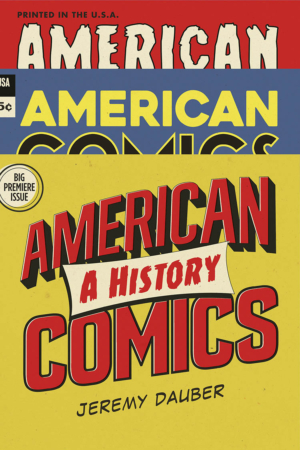A towel worked pretty well.
If Mom got mad about you stealing one of her bathtowels, then a folded sheet was good, or even an old shower curtain. Superheroes never worried about the fabric of their capes, and you didn’t, either. As long as kid-you could leap and climb and fight crime, you were happy. Even better: having “American Comics: A History” by Jeremy Dauber in your hands today.
Though, in a way, the history of American comics started with Egyptian hieroglyphics,you can also easily state that political cartoons were really this nation’s first cartoons. By 1827, comics without words, or the “picture-story,” was recognized as something valid that even semi-literate colonists could enjoy in books.
Early newspapers eventually found cartoons, or the other way around, but those first comics were meant for adults. Still, turn-of-the-last-century children were savvy enough to understand the mischief of the Katzenjammer Kids and soon, comics were beloved by the whole family as they held up a mirror to what Americans were doing or dreaming about. That included conquering the Great Depression and the Fuhrer: by 1939, fourteen new superheroes had appeared in the nation’s comic books.
American GIs were voracious consumers of comics during World War II, as Sad Sack and Dick Tracy joined Barney Google in the service and Daddy Warbucks became a three-star general. Comic book publishers also joined the War Effort when forced to use just a single staple to keep their product together, something a superhero surely could’ve helped do.
WWII comic lovers returned home to some controversy: shortly after wars’ end, comic books were said to contribute to juvenile delinquency.
The 1950s saw the heyday of horror comics and satire magazines that were not necessarily meant for consumption by children. Racism and sexism had always existed in comic books, but the 1960s saw a rise in strips by African American artists and more comic books with a feminist angle. And by the 1970s, comics had become “comix” and nearly everything changed…
Once upon a time, you had piles of comic books. Well-loved, well-thumbed-through, you even read the ads on the back, didn’t you? Yeah, and with plenty of nostalgia and cultural touchpoints, “American Comics” will remind you of those rainy Saturdays spent fighting pixelated crime in POWs, BAMs, and WHAMs.
But here’s the thing: author Jeremy Dauber never lets readers forget that comic book history is inseparably American history. We can trace this country’s past almost entirely through comics like Krazy Kat, Lil’ Orphan Annie, Captain America, Sad Sack, Archie, and Wee Pals, and we can see how American opinions changed according to our favorite funny pages. That makes this book perfect for comic book collectors, unusual-history buffs, and anyone who thought they were wasting time all day when (ha!) they were just reading comic books.
Dear Mom: We forgive you for throwing out all our comic books so long ago. We’d rather have them back, but this book is a warm reminder of them. For sure, “American Comics” is a great escape.
“American Comics: A History” by Jeremy Dauber
c.2021, WW. Norton
$35.00 / $47.00 Canada
592 pages




